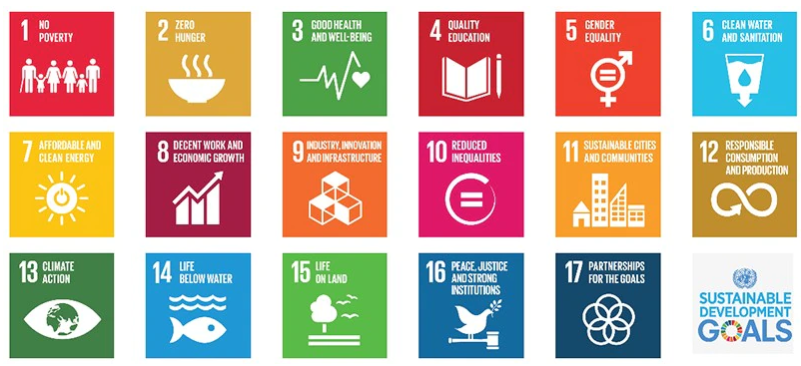The UN Sustainable Development Goals (SDGs)
Ever since the United Nations defined its Sustainable Development Goals (SDGs) in 2015, investors have become increasingly interested in investments that contribute to the realization of these goals and provide a good return. The 17 goals, which should be achieved by 2030, target a broad range of topics such as the availability of water and sanitation for all, food security, achieving gender equality, and access to affordable and sustainable energy.
The challenge: measuring an investment’s impact on the SDGs
It is easy to imagine that, for example, a solar company has a positive impact on the goals, and an oil company a negative one. The challenge, however, is to properly evaluate and quantify the contribution of all companies in an investment universe when building a targeted SDG strategy. This requires a framework, with clear, objective and consistent rules.
RobecoSAM is one of the first asset managers to meet this challenge by developing a proprietary SDG framework. This consists of taking a three-step approach. Robeco’s Credit team will use this framework for the global SDG credits strategy that will be launched in May. We will briefly explain the three steps.
Step 1: What does the company produce?
In step 1 we link companies’ products and services to the SDGs. To what extent do they contribute? Companies are assessed on an extensive set of rules and Key Performance Indicators (KPIs). These are summarized in a guidebook. The guidebook states whether the contribution of these products and services is positive, neutral or negative.
Stay informed on Credit investing
For the telecom sector, for example, the starting point is positive. Telecommunications are an essential part of the infrastructure in a safe and connected society. Farmers can use mobile phones to check market prices before selling to middlemen, and market traders can accept payments in mobile money. This way, the telecom sector can contribute to a proper infrastructure (SDG 9), economic growth (SDG 8) and ultimately to the reduction of poverty (SDG 1).
We then determine the extent of the contribution, which in the case of telecom we deem low. Subsequently, we then dig deeper by looking at the individual companies within this sector and how they score on a set of KPIs. If, for example, more than 25% of the telecom company’s sales take place in emerging markets (which have most to gain from a good telecom network, as e.g. mobile payments can provide large numbers of unbanked with bank accounts), we upgrade the impact from positive-low to positive-medium. See figure 2 for an illustration of the KPIs used.
Step 2: How does the company operate?
SDGs are also about how companies operate themselves. Are they polluting, do they respect labor rights, do they refrain from corruption? In step 2, the credit analysts check if the way the firm operates is compatible with the SDGs. If necessary, the SDG ratings can be adjusted.
Step 3: Are controversies known?
In the final step, we check whether the company concerned has been involved in any controversies, such as oil spills, fraud or bribery. This step can lead to adjustments in the rating. If firms commit serious and structural breaches of the UN Global Compact, they are excluded.
The outcome of this three-step analysis is quantified with an SDG score. This is shown in Table 1.
Table 1 | SDG rating methodology

Source: Robeco
The good and the bad
Robeco’s credit analysts and RobecoSAM’s SI analysts have done a mapping exercise of some 450 companies. 62% of the companies have been assessed as making a positive contribution, such as grid operators, healthcare companies, banks (by providing finance, especially in emerging markets, banks play an important role in fostering innovation and stimulating economic growth) and utilities with a relatively small share of coal, nuclear energy and oil in the energy generation mix.
26% of the companies analyzed make a negative contribution. Examples are energy producers with a relatively large share of fracking, companies that produce unhealthy food, or car manufacturers with a low share of EV/hybrid models.
Important information
The contents of this document have not been reviewed by the Securities and Futures Commission ("SFC") in Hong Kong. If you are in any doubt about any of the contents of this document, you should obtain independent professional advice. This document has been distributed by Robeco Hong Kong Limited (‘Robeco’). Robeco is regulated by the SFC in Hong Kong. This document has been prepared on a confidential basis solely for the recipient and is for information purposes only. Any reproduction or distribution of this documentation, in whole or in part, or the disclosure of its contents, without the prior written consent of Robeco, is prohibited. By accepting this documentation, the recipient agrees to the foregoing This document is intended to provide the reader with information on Robeco’s specific capabilities, but does not constitute a recommendation to buy or sell certain securities or investment products. Investment decisions should only be based on the relevant prospectus and on thorough financial, fiscal and legal advice. Please refer to the relevant offering documents for details including the risk factors before making any investment decisions. The contents of this document are based upon sources of information believed to be reliable. This document is not intended for distribution to or use by any person or entity in any jurisdiction or country where such distribution or use would be contrary to local law or regulation. Investment Involves risks. Historical returns are provided for illustrative purposes only and do not necessarily reflect Robeco’s expectations for the future. The value of your investments may fluctuate. Past performance is no indication of current or future performance.

